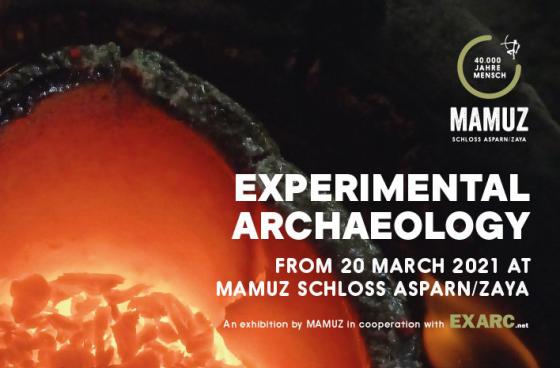
One of the oldest archaeological open-air museums in the world can be found in Austria, north of Vienna. It is part of the MAMUZ museum in and around the castle of Asparn/Zaya. They also have a long tradition in experimental archaeology so it is no surprise that this year’s exhibition is themed: Experimental archaeology. EXARC is very proud to be a partner in this venture.
The exhibition presents exciting and unusual experiments conducted by respected archaeologists from across the globe that have provided revealing insights into the living environments of the ancient world. But can a modern experiment reflect the reality of the past? How is an experiment set up and why is meticulous documentation so important? The exhibition first introduces experimental archaeology as a research method and then presents a broad spectrum of experiments and areas of application.
Archaeology is largely concerned with periods from which neither written nor pictorial sources have survived. Traditional archaeological methods are often inadequate for understanding the way in which archaeological finds, such as tools and structures, were made and used. Only scientific experiments can answer specific questions about the technical possibilities, work processes and craftsmanship of our ancestors.
But in order to carry out an experiment it is vital to have a mastery of the tools and materials. Experimental archaeologists therefore require not just historical knowledge, but also practical know-how and excellent manual skills.
The exhibition shows experiments in areas such as ceramic production, wood technology, bronze casting, glass bead making, textile handicrafts, bone working and metallurgy. Experiments also help understand the processes involved with various activities, such as preparing roast pork 8,000 years ago and are used to show how people lived using a reconstructed Viking house.
As Franz Pieler, the scientific director of the MAMUZ who curated the exhibition explains: “Experimental archaeology has always been a core research area at MAMUZ Schloss Asparn/Zaya. In close cooperation with the Working Group Experimental Archaeology of the Austrian Society for Prehistory and Early History (ÖGUF), the museum regularly hosts workshops and teaching events on the archaeological open-air site. Many of the results of the archaeological experiments have been implemented in the model buildings that were built on the open-air site and have been incorporated into the MAMUZ educational programme.”
The exhibition catalogue will be on sale from 20 March at MAMUZ Schloss Asparn/Zaya and we expect the exhibition to travel for a good number of years to come.
